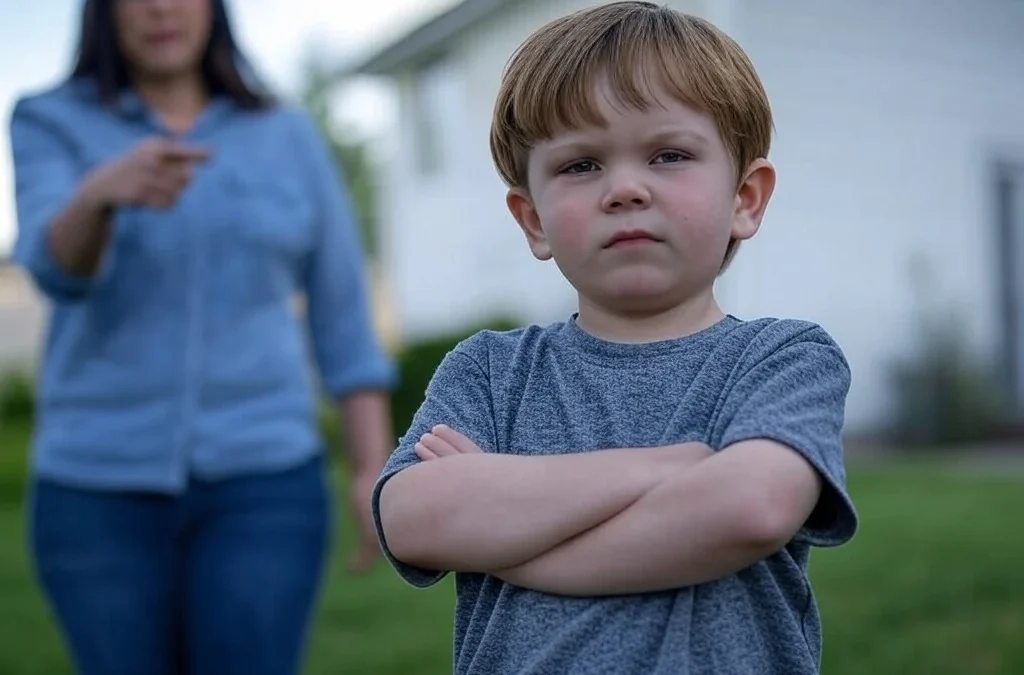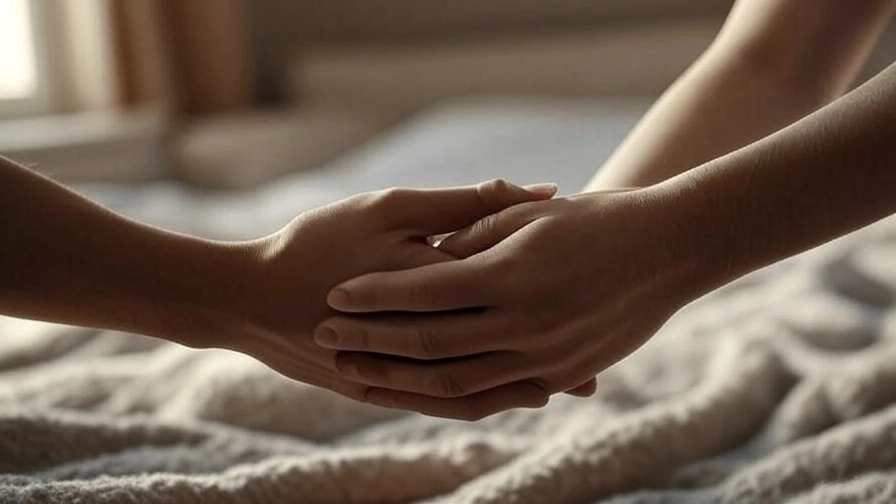Imagine standing in a crowded subway car. Everyone is packed like sardines, eyes glued to their phones, barely acknowledging the existence of others. This scene might seem all too familiar. It’s a small example of how we sometimes lose sight of each other’s humanity in everyday life. Dehumanization, which means seeing others as less than human, happens more often than we might think, and it can take many forms. It’s not just something that occurs in extreme situations; it can be found in subtle ways around us every day.
In this article, we’ll explore 20 examples of dehumanization to help us understand how it manifests and the impact it can have on individuals and society. By recognizing these patterns, we can start to counteract them and foster a more empathetic world. From historical events to workplace dynamics, dehumanization affects how we perceive and treat each other. Understanding this can lead to a more connected and compassionate world, where everyone’s humanity is acknowledged and respected.
What Is Dehumanization?
Dehumanization is the act of seeing or treating people as less than human. It happens when someone is stripped of their individuality, dignity, or worth and is instead reduced to stereotypes, labels, or objects. This can take many forms, such as insulting language, discriminatory behavior, or portraying people as inferior or dangerous.
At its core, dehumanization denies the value and complexity of a person. It allows others to justify harmful actions, from exclusion to violence. History shows that dehumanization has been a tool in wars, oppression, and hate. However, it also happens in everyday life – through casual insults, jokes, or ignoring someone’s feelings.
Key Examples of Dehumanization
Dehumanization occurs when we strip away the humanity of individuals or groups, often leading to discrimination and violence. Here are twenty distinct examples to help you understand this concept better:
1. War Propaganda: During wartime, governments often use propaganda to depict the enemy as less than human. They might use derogatory terms or depict them as monsters and terrorists in the media. This makes it easier for soldiers and civilians to justify violence against them.
2. Slavery: A historical example of dehumanization is slavery, where people were treated as property. Slaves were often denied basic human rights, stripped of their identities, and viewed merely as tools for labor.
3. Racism and Racial Stereotypes: Racial discrimination often involves dehumanizing stereotypes that reduce individuals to a single trait or behavior. These stereotypes ignore the complexity of human beings, leading to unjust treatment and societal division.
4. Genocide: In cases of genocide, perpetrators often dehumanize their victims to justify mass murder. They might refer to the targeted group as vermin or pests, creating a false narrative that they are a threat to society.
5. Communism’s Dehumanization of People: Under communist regimes like Stalin’s Soviet Russia and Pol Pot’s Cambodia, dehumanization was used as a political tool. People labeled as “enemies of the state” or “counter-revolutionaries” were stripped of their individuality and treated as threats rather than human beings. In Stalin’s Russia, entire groups such as kulaks were demonized to justify mass executions and forced labor camps.
6. Bullying: In schools, bullying can be a form of dehumanization. Bullies might use names or insults to make their victims feel less than human, aiming to strip away their dignity and self-worth.
7. Colonialism: Colonial powers often dehumanized indigenous populations to justify their domination and exploitation. They would portray native people as savages in need of civilization, disregarding their rich cultures and traditions.
8. Prison Systems: In some prison systems, inmates are dehumanized by being referred to by numbers rather than names and subjected to inhumane conditions. This can strip them of their identity and humanity, making rehabilitation more difficult.
9. Eugenics Movements: Eugenics programs, which promote selective breeding to “improve” human populations, dehumanize individuals by reducing them to genetic traits. Those deemed “unfit” are often sterilized or subjected to other forms of abuse, disregarding their intrinsic value as human beings.
10. Technology and Automation: In the workplace, automation can lead to dehumanization when workers are treated as mere cogs in a machine. When management focuses solely on output without regard for employee well-being, people can feel like replaceable parts rather than valued individuals.
11. Factory Assembly Lines: In many large factories, workers are often required to perform repetitive tasks for long hours. This mechanization of labor can strip individuals of their sense of agency and creativity. They become mere cogs in a machine, valued only for their ability to perform monotonous tasks quickly and efficiently.
12. Social Media Anonymity: On social media platforms, anonymity can lead to dehumanization. People interact with others without seeing them as real human beings. This often results in harsh and insensitive comments, as users forget the impact their words can have on real individuals with feelings and emotions.
13. Prisoner Identification Numbers: In some correctional facilities, prisoners are referred to by numbers rather than names. This stripping away of personal identity reduces them to mere objects within the system. It can lead to a loss of dignity and self-worth, as they are seen as nothing more than entries in a ledger.
14. Automated Customer Service: Many companies use automated systems to handle customer inquiries. While efficient, these systems can feel impersonal and frustrating. Customers may feel like they are talking to a machine rather than a person, leading to a sense of alienation and a belief that their concerns are not genuinely valued.
15. Mass Surveillance: In societies with extensive surveillance, individuals may feel like they are constantly being watched. This environment can make people feel like they are objects of scrutiny rather than free individuals. The loss of privacy can lead to increased stress and a feeling of being treated as mere data points.
16. Homelessness Stereotyping: Homeless individuals are often treated as invisible or less than human by society. They may be seen as a problem to be solved rather than people in need of help. This dehumanization leads to a lack of empathy and understanding, further marginalizing an already vulnerable population.
17. Refugee Camps: In refugee camps, individuals are often reduced to numbers in a system designed to manage large populations. The lack of personal space and autonomy can strip away individual identity, making people feel like they are just part of a faceless mass. This environment can diminish their sense of humanity and individuality.
18. Call Center Metrics: Employees in call centers are often judged solely by their ability to meet certain metrics, such as call duration or number of calls handled. This focus on numbers can overlook the human aspect of customer service, reducing the employee to a statistic rather than a person providing assistance.
19. Medical Institutionalization: Patients in long-term care facilities can sometimes be treated as cases rather than individuals. The focus on managing conditions rather than the holistic well-being of the person can make patients feel like they are merely a collection of symptoms rather than whole human beings deserving of compassion and respect.
20. Military Training: In the military, recruits are often trained to follow orders without question. While discipline is necessary, the process can sometimes strip individuals of their personal identities and reduce them to units within a larger force. This dehumanization can make it easier to carry out difficult tasks without considering the broader human impact.
Dehumanization in Historical and Contemporary Contexts
Throughout history, dehumanization has been a tool used to oppress and control marginalized groups. From the atrocities of the communism to the horrors of slavery, dehumanization has played a critical role in enabling systematic abuses. In these historical contexts, propaganda, language, and media were often used to depict the targeted groups as subhuman, thus facilitating widespread acceptance of their mistreatment.
Dehumanization often takes the form of labeling entire groups with negative and harmful terms. For example, calling a group “terrorists” or “terrorist supporters” reduces them to stereotypes. It denies their individuality and humanity. This kind of language creates fear and hostility, making it easier to justify unfair treatment or even violence.
Dehumanization like this is powerful because it simplifies complex situations. Instead of understanding the reasons behind someone’s actions or struggles, people reduce others to labels. These labels strip away compassion and empathy. They make it harder to see others as real people with feelings, hopes, and challenges similar to our own.
Modern technology, including social media platforms, can amplify dehumanizing messages, leading to cyberbullying and online harassment. Understanding the historical and contemporary contexts of dehumanization provides insights into how prejudices can be perpetuated and how societies can work towards eliminating these harmful narratives. By learning from the past and recognizing current patterns of dehumanization, individuals and communities can strive for a more just and equitable world.
Dehumanization Under Communism
Under communism, dehumanization played a central role in enforcing power and control. In Stalin’s Soviet Russia, millions of people were stripped of their individuality and reduced to labels such as “enemies of the state” or “counter-revolutionaries.” Farmers, intellectuals, and even ordinary citizens were accused of being a threat to the regime, often without evidence. The government used these labels to justify brutal purges, forced labor, and mass executions. The kulaks, or wealthier peasants, were demonized during collectivization. They were portrayed as selfish and greedy, blamed for food shortages, and sent to labor camps or executed. This kind of propaganda dehumanized an entire group, making it easier for others to accept their suffering.
In Pol Pot’s Cambodia, dehumanization reached horrifying extremes. The Khmer Rouge regime labeled anyone connected to the former government, intellectuals, and even people who wore glasses as enemies. They were seen as symbols of corruption or elitism, stripped of their humanity, and targeted for elimination. People were not treated as individuals but as obstacles to the regime’s vision of an ideal society. The regime referred to them as “parasites” or “traitors,” making their extermination seem justified. Over two million people were killed, often through inhumane conditions or outright executions.
In both cases, dehumanization was a tool to suppress dissent and maintain power. By dehumanizing certain groups, leaders made it easier for society to turn a blind eye to atrocities. When people are reduced to stereotypes, stripped of their complexity, or labeled as enemies, their suffering becomes easier to ignore or even support. These historical examples remind us how dangerous dehumanization can be and why it must be challenged wherever it appears. Understanding this history helps us recognize the signs of dehumanization today and stand against it.
Understanding the Psychology Behind Dehumanization
Dehumanization is a psychological process where individuals or groups are perceived as less than human. This often leads to the justification of inhumane treatment and violence against those groups. One key aspect of dehumanization is the cognitive bias that allows people to view others as objects or animals rather than human beings. This cognitive shift can be triggered by social, political, or cultural factors that emphasize differences between groups, such as race, nationality, or religion.
When a group is dehumanized, their suffering is minimized, and empathy towards them is significantly reduced. This process is not only a precursor to acts of violence and discrimination but also a mechanism that perpetuates these behaviors by justifying them in the minds of perpetrators. Recognizing the psychological roots of dehumanization can help in developing strategies to counteract it and foster a more empathetic and inclusive society. Understanding how dehumanization occurs can provide insight into how to prevent it and promote human rights and dignity for all.
How to Stop the Dehumanization of Humans and Protect Dignity and Value
Dehumanization often begins with a mindset, words, or actions that strip others of their humanity. It can happen subtly or overtly, in everyday situations or during major conflicts. Stopping it requires deliberate effort, but it’s essential for creating a more compassionate and fair world. Here are practical ways to combat dehumanization and protect the dignity and value of every person, even when it feels challenging or unpopular.
Recognize Dehumanization in Everyday Life
Dehumanization doesn’t only happen in extreme cases like war or oppression. It can show up in small ways—mocking someone’s accent, judging them based on stereotypes, or dismissing their struggles. Catching these behaviors in yourself and others is the first step. Ask yourself: Am I treating this person as fully human, with thoughts, feelings, and experiences as valid as my own?
Humanize Through Empathy
Empathy is the antidote to dehumanization. Try to see the world from someone else’s perspective. Listen to their stories without judgment or interruption. When we understand the experiences that shape people, it’s harder to reduce them to labels or stereotypes. Even when someone behaves badly, remember they are more than their worst moment.
Watch Your Language
Words matter. Avoid using language that reduces people to a single trait or degrades them. Words like “lazy,” “criminal,” or “monster” can make it easier to treat someone unfairly. Instead, describe behaviors or actions without attacking the person. Choose words that reflect respect and understanding, even when it’s hard.
Treat Everyone With Basic Respect
Respect isn’t just for people you agree with or admire. It’s for everyone, even those who seem difficult, angry, or different. This doesn’t mean you have to accept harmful behavior. But it does mean recognizing their humanity and treating them as valuable. A small act of kindness—like showing patience in a heated moment – can go a long way.
Focus on Common Humanity
People often focus on differences, which can make it easier to justify mistreatment. Instead, remind yourself of what connects us all. We all want to feel safe, valued, and understood. Recognizing shared needs and desires can help bridge divides, even in tense situations.
Stand Up Against Dehumanizing Behaviors
If you witness dehumanization, speak up. Silence often allows harmful behavior to continue. You don’t need to be confrontational – sometimes, a calm and respectful comment can shift the tone. For example, saying, “I think everyone deserves to be treated fairly,” can challenge dehumanizing attitudes without escalating conflict.
Set a Personal Example
People learn from what they see. By treating others with dignity, even when it’s hard, you encourage those around you to do the same. Be consistent in your actions, whether someone is watching or not. Integrity is a powerful tool in fighting dehumanization.
Stay Committed, Even When It’s Hard
Protecting human dignity can feel exhausting when others don’t seem to care. But giving up only allows harmful attitudes to grow. Remember, small actions matter. A kind word, a moment of patience, or standing up for someone can make a significant difference.
Why This Matters
When we protect the dignity of others, we also strengthen our own humanity. Dehumanization harms everyone—it erodes trust, divides communities, and creates suffering. By choosing to see and treat others as fully human, we can build a world where respect and compassion are the norm.
Every effort counts, no matter how small it seems. Even if the world doesn’t notice, your actions have value. Let’s work together to make humanity kinder, one person at a time.
Impact of Dehumanization on Empathy and Social Connection
Dehumanization erodes empathy. When people view others as less than human, it becomes easier to dismiss their feelings and struggles. This can happen in everyday situations. For instance, think about how people might react to homeless individuals. By seeing them as “other,” society often ignores their plights. This lack of empathy creates barriers. It prevents genuine social connections and understanding.
In workplaces, this can lead to toxic environments. Employees may feel undervalued or alienated. Without empathy, collaboration suffers. Innovation stalls. Teams don’t function as they should. It’s crucial for leaders to recognize this. By fostering empathy, they can improve workplace dynamics. This isn’t just a moral issue. It’s practical. Empathy boosts productivity and job satisfaction.
On a larger scale, dehumanization affects societal cohesion. It divides communities. It fosters prejudice and discrimination. When empathy is lost, conflict becomes more likely. It’s essential to address this. Encouraging empathy can bridge divides. It can help build more inclusive societies. Everyone has a role to play here. From individuals to institutions, promoting empathy is vital.
The Role of Media in Dehumanization
Media plays a significant role in dehumanization. The way stories are portrayed can shape public perception. Often, media outlets focus on sensationalism. They highlight negative traits or actions. This can lead to stereotypes. Groups or individuals are seen through a narrow lens. It’s not just news media. Movies and TV shows can also contribute. They sometimes depict certain groups in a negative light. This reinforces existing prejudices.
Take social media, for example. It’s a place where dehumanization can spread quickly. Anonymity allows people to say things they wouldn’t in person. This can lead to cyberbullying and online harassment. People become targets. Their humanity is stripped away. The impact can be devastating. Victims may experience anxiety, depression, or worse.
However, media can also fight dehumanization. It can highlight diverse stories and voices. It can challenge stereotypes. By doing so, it can promote understanding. Media creators have a responsibility. They can choose to build empathy. They can choose to educate and inform. When used correctly, media is a powerful tool for good. The choice is yours.
Read also: 20 Mainstream Media Examples & Definition
The Most Popular on BitGlint

Top 100 Personal Items List
Everyone uses personal items in their daily lives, often without even thinking about them. From the moment you wake up...

30 Defiance Examples & Meaning
Defiance is something most people experience at some point in life. You feel it when you say no to something that...

Top 30 Desire Examples & Definition
Desire is a powerful force that drives much of human behavior, shaping our goals, dreams, and everyday decisions. It's...

100 Non-Digital Things List
In everyday life, there are still hundreds of objects, tools, and materials that exist completely outside the digital...

30 Examples of Attention & Definition
Have you ever noticed how a catchy tune can grab your attention, even when you're busy doing something else? It's...

60 Cultural Traditions Examples & Definition
Cultural traditions are part of daily life - whether people realize it or not. They shape what we eat, how we...

Top 30 Intimacy Examples & Meaning
Intimacy goes beyond physical touch or romantic moments. It’s about closeness, trust, and connection. In everyday...
Get Inspired with BitGlint
The Latest
40 Emotional Value Examples & Meaning
Why do some messages stick — while others are forgotten? Why do people choose one brand over another, even when the product is the same? The answer often comes down to emotional value. Emotional value is what makes a message feel human. It’s the emotional connection...

30 Teasing Examples & Definition
Teasing is a common part of human interaction. People tease in different ways, for different reasons. Sometimes it is friendly. Sometimes it can hurt feelings. Understanding what teasing means and seeing clear examples helps everyone handle these moments better....
40 Thought Experiments for Curious Minds
Some questions can’t be answered with a simple yes or no. Some problems don’t have a clear solution. That’s where thought experiments come in. They aren’t just old ideas from philosophy books. Thought experiments are tools we still use to think through problems, test...
Top 100 Things That Are Hot
Have you ever wondered about the hottest things around us or far beyond our everyday lives? Hot temperature isn't just about weather or boiling water—it's a measure of how quickly molecules move, creating heat energy we can feel or even see. From incredibly intense...

